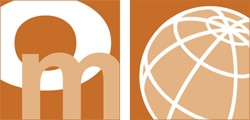Outcome Mapping Practitioner Guide
Measuring SUMERNET’s Achievements
SUMERNET uses the Outcome Mapping approach in monitoring the result of its research and policy engagements in influencing policy. The approach has been deemed suitable since it focuses on monitoring outcome instead of focusing on the level of outputs.
Author: Agus Nugroho
Published: Thursday 13 August 2020
Sustainable Mekong Research Network (SUMERNET, www.sumernet.org) has been focusing on supporting research collaboration and policy engagement in the Mekong Region to influence policy and practice towards sustainability. SUMERNET through implementation phases from Phase 1 (2005 – 2008) until the current phase, SUMERNET 4 All (2018 – 2023) consistently works toward this vision. The difference among implementation phases was on the scope or focus of the research, while overarching goal for each phase has been persistently influencing policies through credible scientific research and policy engagement.
SUMERNET uses the Outcome Mapping approach in monitoring the result of its research and policy engagement in influencing policy processes. The approach has been deemed suitable since it focuses on monitoring outcome instead of focusing on the level of output. In monitoring the influence of research policy engagement, SUMERNET needs to focus on the ‘use of output’ or beyond the output and Outcome Mapping provides systematic approach to focus on the outcome from the inception of the project.
Using the Outcome Mapping approach, outcomes in SUMERNET are defined as the expected changes of behaviour, perception, relationships or practice of SUMERNET’s boundary partners. Such changes should be attributed to the influence and interventions of the SUMERNET programme. These boundary partners are the individuals, groups, or organizations with whom SUMERNET interacts directly, and with whom the programme can anticipate opportunities for influence. In most of SUMERNET’s implementation phases, the boundary partners are categorized as:
- Knowledge Producer who are individuals implementing the research project supported by SUMERNET.
- Policy influencers who are individuals or organizations who consider different information sources in their effort to advocate for policy change or influence development decisions. These partners include advocacy agencies, regional networks and institutes2, NGOs, local communities and their leaders, media, thinktanks, and the private sector.
- Policy makers which include stakeholders who have mandates to make decisions on relevant policies and development such as governmental officials at various levels, private sector actors deciding on investments, and regional organizations such as ADB GMS and MRC.
In the beginning of the implementation phase, the expected outcomes (changes in behavior, perception, relationships or practice) from each of these boundary partners.
The expected outcome for knowledge producers would be mostly formulated in such statement: “SUMERNET intends to enable them to generate credible research and engage with policy making processes by providing resources and building their capacities”. Whereas for policy makers, the outcome statement would be “SUMERNET intends to inform this boundary partner with relevant credible knowledge resulting from the research”. For policy influencers, “SUMERNET intends to improve their ability to understand sustainable development issues in the region and through the use of scientific knowledge especially from SUMERNET research, advocate for sustainable development policy and practice in the region”. These outcomes should be geared towards achieving the vision of influencing towards more sustainable development policies and practices in the Mekong Region.
Using only quantitative indicators in measuring such outcomes would not fully reflect the changes of behavior, perception, relationships and practice, instead there is the risk of monitoring only at the output level. Therefore, SUMERNET utilizes qualitative and participatory form of monitoring and evaluation such as Most Significant Change (MSC) technique.
The MSC technique is based on the collection and systematic selection of stories of reported behavioral changes as result from development activities. The stories are collected from boundary partners whose changes will be identified and categorized. After identification and categorization, the stories are further analyzed using Knowledge-Attitude-Practice (the KAP) framework through qualitative data analysis. Further on the use of these methods and tools, including results will be presented in the next article within the SUMERNET MEL Series.
Based on SUMERNET experience since the inception of the network, it can be surmised that changes of behavior, perception, relationships and practices are very complex. Even more complex, as SUMERNET is trying to link these changes with influence towards policy processes, creative use of approaches and tools are deemed necessary. Using mix of Outcome Mapping approach, MSC technique, KAP framework and qualitative data analysis tool, SUMERNET is trying its best to measure its achievements accurately.
This nugget was applied in: Sustainable Mekong Research Network (SUMERNET)
Related Practitioner Guide sections:



